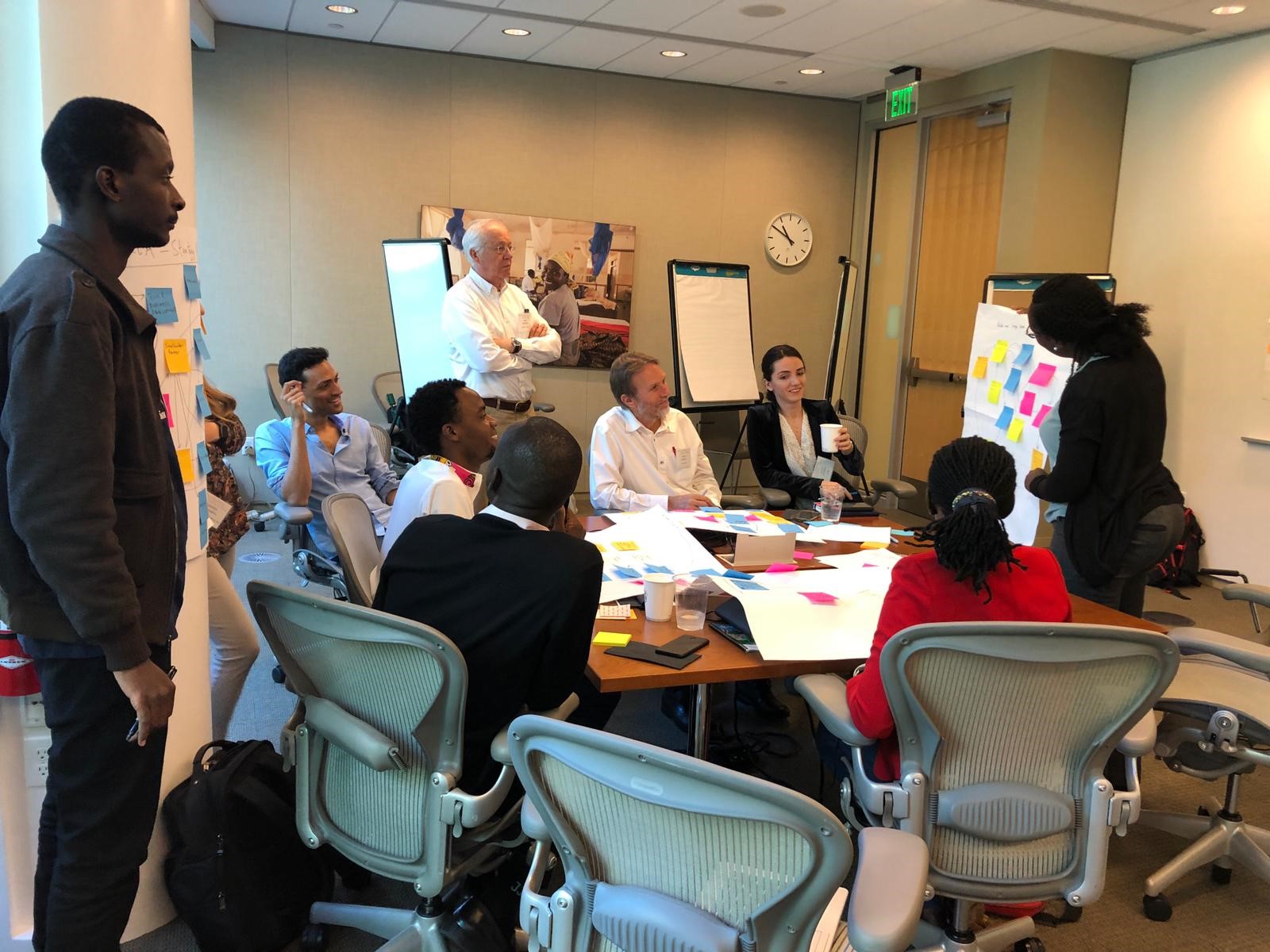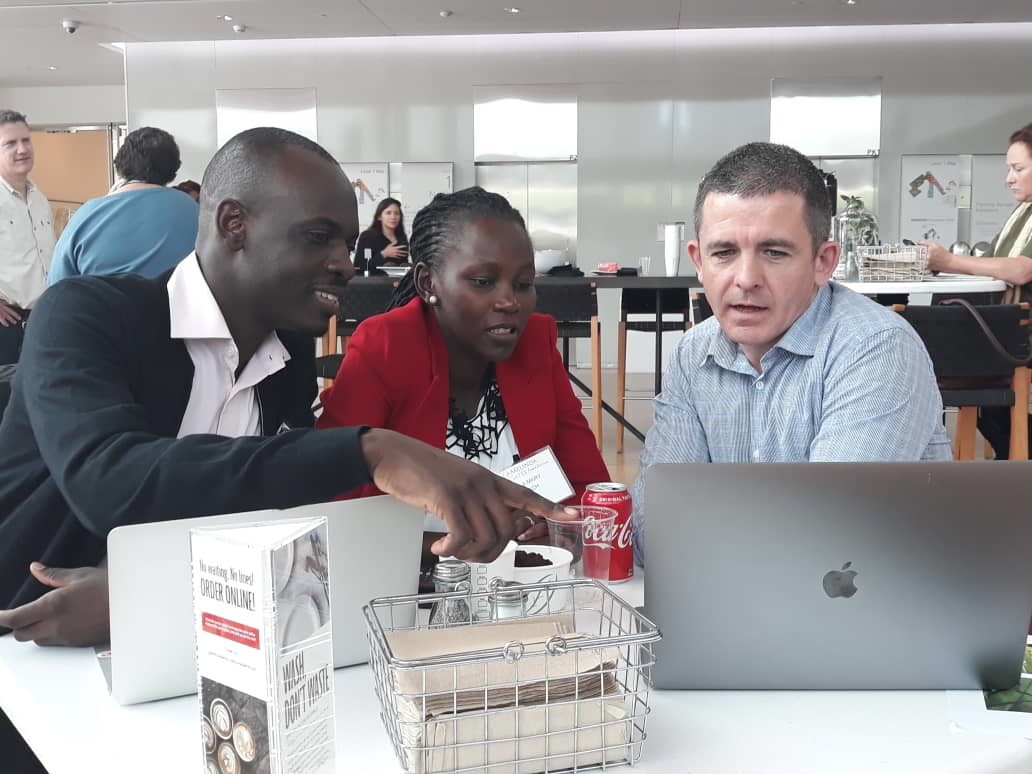Let us know what type of content you'd like to see more of. Fill out our three question survey.
Power Beyond the Prize
Jul 16, 2019
The Bill & Melinda Gates Foundation recently hosted a convening between two sets of challenge prize winners: Feed the Future’s, through the U.S. Agency for International Development (USAID), Fall Armyworm Tech Prize finalists and the Grand Challenges Explorations (GCE)’s Tools and Technologies for Broad-Scale Pest and Disease Surveillance of Crop Plants in Low-Income Countries winners. The objective was to catalyze collaboration between the two groups of innovators working in digital agriculture, engineering, modeling, remote sensing, pathology, and chemistry for the benefit of farmers.

Over the past year, both USAID and the foundation ran competitions to solicit technology solutions to agricultural problems in low-income countries.
GCE solicited innovative tools and technologies for crop pests and disease surveillance over large geographic regions. The Fall Armyworm Tech Prize sourced digital tools and approaches to provide timely, context-specific information that enables smallholder farmers and those who support them to identify, treat, and track the incidence of fall armyworm in Africa.
Though similar, the two competitions attracted two distinct applicant pools. The Fall Armyworm (FAW) Tech Prize applicants mostly consisted of small tech companies, social enterprises, and nongovernmental organizations based, or operating in Africa, while GCE mostly attracted researchers from academic institutions.
It was this difference that made the peer learning especially engaging and effective. The FAW prize winners could offer advice on how to understand farmers’ needs, perspective on whether there is demand for the tools being built, how to deal with the problems of scaling and growing in a specific context, how to pitch and demonstrate that the proposed product is adding value to the market, and how to get the technology solution to market.
In contrast, the GCE winners represented savvy technical solutions that had been built in a research and/or academic environment. Although the solutions were designed to fill market gaps, the designers wanted to learn more about the competitive landscape in Africa and farmers’ day-to-day needs.

Given the two groups’ different experiences, the convening event offered a unique opportunity for both groups of winners to exchange ideas, lessons learned, and best practices with a community of like-minded individuals they probably would never have met if it wasn’t for the foundation. Here are some major takeaways from their interactions:
-
Game-Changing Technologies—Many of the technologies developed by the GCE winners are hardware solutions that are being developed and tested in research labs—a low-cost printable paper sensor to surveil soil conditions for early detection of pests and disease; a maintenance-free chemical sensor capable of monitoring the concentration of chemical vapors released from crops; or Intelligent Solar Insect Detection traps equipped with low-power wireless image sensors. The FAW Tech Prize winners reflected on the potential these solutions have for the markets they are operating in. Alloysius Attah, CEO and Co-Founder of Farmerline, said, “If they are able revolutionize soil testing, it will be a game changer. The current soil testing device costs $3,000. With this more affordable device, we could build a reliable soil map of all farms that Farmerline is working in and be more precise in our service provision to farmers at the last mile.”
-
Content Providers—The FAW Tech Prize finalists developed digital solutions that provide necessary information to farmers across Africa. They have access to these markets and know how to get that information in the right hands. But, because pest and disease threats are constantly changing, they sometimes struggle with getting the correct and appropriate content needed to inform the farmers of current threats. Here’s where the research done by the GCE winners is key. Their solutions yield updated information on the threats affecting farmers most and the best approaches to mitigating those threats. Adam Wills, Co-Founder of farm.ink, said that his discussion with a representative from CABI highlighted new opportunities to re-use the content delivery mechanism farm.ink has already built over web-based channels while using the content CABI has developed to educate farmers on a variety of practices and potential threats. Similarly, Cornelius Adewale, Founder of Cornbot, said, “This convening represents more than just learning from others. It’s about the connections, the collaboration. Here’s an example: I’ve been looking for a certain type of data to integrate into our yield models and improve the app for years. I’ve searched everywhere. Then I came here. I had a conversation with someone from NASA and he sent me the link to the exact data set I was looking for. We’re going to start using it tomorrow.”
-
Access to and Understanding of Local Markets—Now, you ask, if the GCE winners are providing game-changing technologies as well as useful content to inform further development of the Fall Armyworm Tech Prize solutions, what are the prize finalists providing in return? This was perhaps the most surprising part of the convening. The GCE winners’ focus on developing their tools and technologies in research labs meant that they struggled with thinking through the other variables that might affect going to market. Several FAW winners reflected on how they could support this effort by creating a mutually beneficial relationship. Alloysius said, “They are figuring out how to distribute their technologies to the right markets and that’s what we have. We have run several pilots, we have a business model, we understand the supply chain, we have a network of clients across 12 countries—and we are profitable. Integrating a new tool into that existing system would be easy.” Chief Technology Officer of Akorion, Zilla Arach, added, “We understand the local markets and could make sure that by the time they are ready to deploy the tool, they understand them, too. We train farmer cooperatives and think about things such as behavior change, politics, governance. We make sure to account for all of this before we deploy any solution.”
Prizes can engage unique problem solvers who are often overlooked or unreachable by government’s bureaucratic systems. Prizes not only attract new ideas to old problems—the solution providers also then help to inform policymakers and donor communities of the realities of the issue from a hyper-local perspective. And, perhaps surprisingly, the competition can actually yield collaboration—among the private sector, government, civil society, and local communities, mobilizing these groups to shape the ecosystems in which they live.
This is what we saw during the convening and what we hope to see more of as these innovative technologies are taken to market.